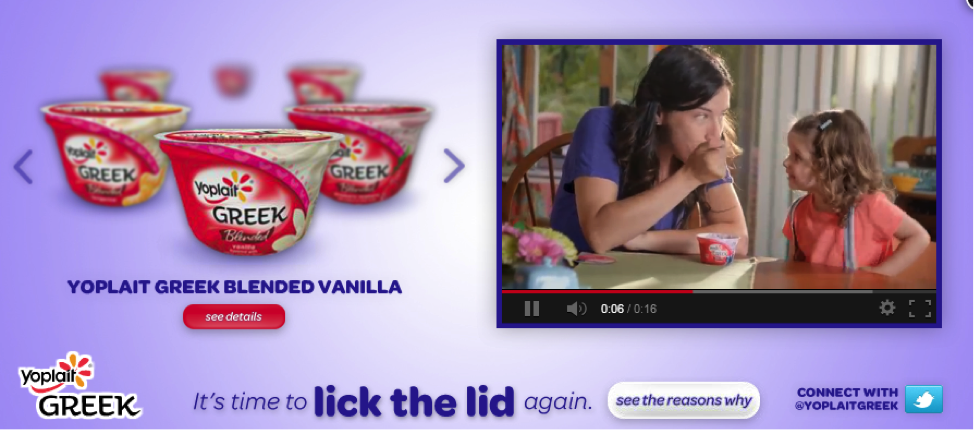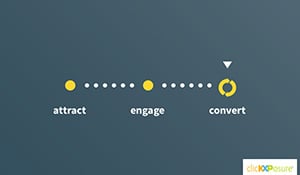How to Use Google’s Engagement Ads to Increase Your Brand Reach

Google launched engagement ads at the end of December 2013, in order to provide advertisers a whole new way of engaging with their audiences in the year 2014 and ahead. AdWords—which already offers text ads, dynamic search ads, comparison ads, product listing ads, offer extensions, ad sitelinks and more—added a new way to help advertisers increase their brand reach by combining the “Art of Brand Building with the Science of Digital.” This new ad type is known as “Engagement Ads” or “Lightbox Ads”.
Why Engagement Ads?
Let me ask you a question: which promotional object will you choose in order to engage with your customers—a business card or a brand catalog? Obviously, a brand catalog will provide more details regarding the products and services that your brand offers and help you increase sales and ROI. This is what is achieved with the help of this newest Google discovery, the engagement ads.
Engagement ads let you unleash your creative skills in order to engage your customers with your brand story. You have the power to embed videos, games or a great shopping experience in these digitally rich ads.
How to Use Them?
Lightbox ads allow you to embed your marketing material in the form of rich interactive videos, games or catalogs into the standard ad display unit. These ads get displayed in the Google’s display network and have a two-second delay that ensures ads are visible only when the users are genuinely interested in viewing the ad. The reason it is known as “Lightbox” is because when the ad opens after a two second delay, the entire page background dims to allow the ad to take the center stage. This ensures that audiences are looking only at your ad and nowhere else.
How is the Ad Price Calculated?
Lightbox ads are calculated on a cost per engagement (CPE) basis, which means you only pay when the audience interacts with your brand or, in other words, when the users read the message related to your brand. One of the leading aid and development NGOs, Oxfam indicated in a case study that the CPE model used by engagement ads delivered twice as many engagements as compared to the traditional advertising models.
Types of Ad Formats
Engagement ads are available in several formats as explained below and they all use the rollover-to-expand interaction method.
Standard Lightbox
The most common form of ads is the standard Lightbox where an ad of any size from any location of the web page moves to the center, dimming the web page background while enabling the ad to stand out. An example of a standard Lightbox is shared below:

[Layout] HTML 5 GDN – Hover-to-Play
This format is only available in HTML 5 with a single YouTube viewer. The hover-to-play ad format allows the ad play when the cursor is hovered above the ad. The example below displays a hover-to-play video that automatically plays whenever the cursor is hovered above the ad. This format runs in the Google Display Network, also abbreviated as GDN.

[Layout] GDN Masthead in Lightbox – Background
This ad format expands to a masthead-sized panel after a two-second gap when the cursor hovers over the ad. GDN masthead in Lightbox displays the option to view a full dimension intro video if the user clicks on the ad.

[Layout] GDN Masthead in Lightbox – Image Gallery
This type of ad expands to a masthead-sized panel after a two-second gap along with an image gallery when the cursor falls on the ad. This ad is available only on GDN.

[Layout] GDN Masthead in Lightbox – Carousel
This ad format expands to a masthead-sized panel and also lets you display a carousel of videos or images whenever any user hovers the cursor above the ad. The first video in the ad runs automatically while the other videos in the carousel require the user to play them manually. You can only run these ads on GDN.

Standard Expandable
The Standard expandable is a high engagement ad format that plays the video automatically when the user moves the cursor over the ad. It also displays a set of options along the right side of the video.

Catalog in Lightbox
As the name suggests, you can display your business catalog across the web with the help of the Catalog in Lightbox ad format. This format also allows you to get access to relevant metrics like page flips and product views along with the standard metrics.

YouTube Masthead in Lightbox
This ad format allows you to display your already-created YouTube homepage masthead across the web.

[Layout] GDN Lightbox – Video Gallery
This hover-to-display video ad format allows for a showcase of three YouTube videos simultaneously.

[Layout] GDN Lightbox – Featured Video
This ad format is similar to the above video gallery format, but it allows you to feature only one video at a time instead of three.

How Can Adwords Specialists Help in Enhancing Your Brand Reach?
Targeting rich media ads to a wrong audience will not help you increase your ROI. This is where the role of AdWords Experts becomes necessary. The model of AdWords is such that you may lose money if you aren’t bidding at the right cost, at the right time, or in the right platform, and also if you aren’t using the right keywords. Some businesses waste a lot of money by bidding for the wrong keywords like their brand name. The engagement ads offer great options for increasing your brand reach, but the role of an efficient AdWords specialist cannot be ignored. Choosing the correct display networks, as per your business target locations and demographics, is extremely necessary.
So, get ready to explore these rich media ads in order to improve your business bottom line.
About the Author

Joydeep Bhattacharya is the author of Seosandwitch.com and has been associated with the Internet marketing industry since 2009. He loves to share insights on the latest search engine updates. You can connect with him on Twitter.




